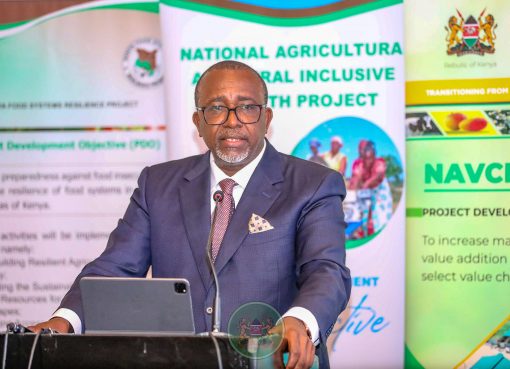The Nakuru County Government has embarked on an ambitious programme of harnessing natural wetlands to buffer the residents against the impacts of climate change and help boost resilience.
The County Executive for Water, Environment, Energy, Climate Change and Natural Resources Dr. Nelson Maara said last year’s national security survey showed that climate change comes in second after terrorism as it triggers intercommunal conflicts in the country, thus calling for serious and enhanced climate actions.
To this end, Maara said the County in collaboration with State agencies, research institutions and environmentalists were rehabilitating riparian land in various parts of the County by planting indigenous trees which had been cut down in recent years by suspected illegal loggers and small-scale farmers.
The County Executive made the remarks when he hosted representatives of the Climate investment fund where they deliberated on nature-based solutions for natural ecosystems, for the overall benefit of the Society.
While pledging the County administration’s willingness to partner and work with various stakeholders in matters to do with conservation and restoration of wetlands, Dr. Maara emphasized the importance of conserving the riparian land saying they formed an important aspect of ecosystems and habitat for human and animals’ existence.
He argued that in order to reduce the effects of climate change, there was need to strengthen capacity building, training and sensitization programs by enhancing intervention and restoration efforts in the conservation of natural resources.
The County Executive added that the wetlands restoration programme feeds into the 15 billion tree-growing presidential directive, which is also in tandem with the ongoing global climate change discussions and greenhouse emissions cut strategies.
According to Dr. Maara, wetlands act as natural sponges, absorbing and filtering excess nutrients, pollutants and sediments from water bodies, which help to purify water and prevent flooding. Furthermore, he said wetlands were essential for biodiversity conservation, providing critical habitat for migratory birds, fish and other wildlife.
Wetlands include any land that is saturated with water like marshes and mangroves along the coasts, floodplains and wet meadows along rivers and streams, vernal pools and prairie potholes.
They play a vital role in retaining water on the landscape, maintaining water cycles and reducing temperature extremes. They also store water from precipitation and slowly release it to the surrounding environment, which can recharge groundwater aquifers and maintain atmospheric water cycles.
Wetlands have been hailed globally as carbon sinks, storing a vast amount of carbon and thus helping to mitigate climate change.
Dr. Maara also indicated that the county government and other stakeholders had also kicked off the process of rehabilitating the riparian land around Lake Naivasha which involves the planting of acacia trees and papyrus.
“We are working with the Department of Lands to help us identify all the riparian boundaries in the county so that the land can be protected,” he affirmed.
The County Executive said the protection of water catchment areas and riparian land was crucial for the livelihoods of all Kenyan households and urged farmers to stop encroaching on riparian land and leave a 30-metre distance between their farms and rivers.
He added that Governor Susan Kihika’s administration had crafted public-private partnerships that were sensitizing farmers to farm at least 30 metres away from river banks and to plant friendly crops.
Maara observed that prolonged droughts, flash floods, and famine experienced in some parts of the country highlighted the need to protect the environment and underscored the importance of planting and tending trees, to prevent soil erosion and maintain biodiversity.
According to the United Nations Environment Programme, wetlands are among the world’s most productive ecosystems, providing a wide range of ecosystem services. These include flood control, water purification, biodiversity conservation, and climate regulation.
According to environmental expert’s wetlands slow the speed of flood waters and distribute them more slowly over the floodplain, and thus provide a key ecosystem service to mankind, particularly those who live in Africa, a continent bedeviled by the worsening impacts of climate change.
According to the Global Wetland Outlook report 2021, the world has lost 35 percent of wetlands since 1970. Changes in land use and the climate are severely affecting wetlands, leading to degradation and loss.
Also in attendance were representatives from World Bank, Kenya Wildlife Service (KWS) Kenya Forest Service (KFS), National Environment Management Authority (NEMA), Water Services Regulatory Board (WASREB) The Arid and Semi-Arid Lands (ASALs) authority and the National Environment Trust Fund (NETFUND).
By Esther Mwangi




